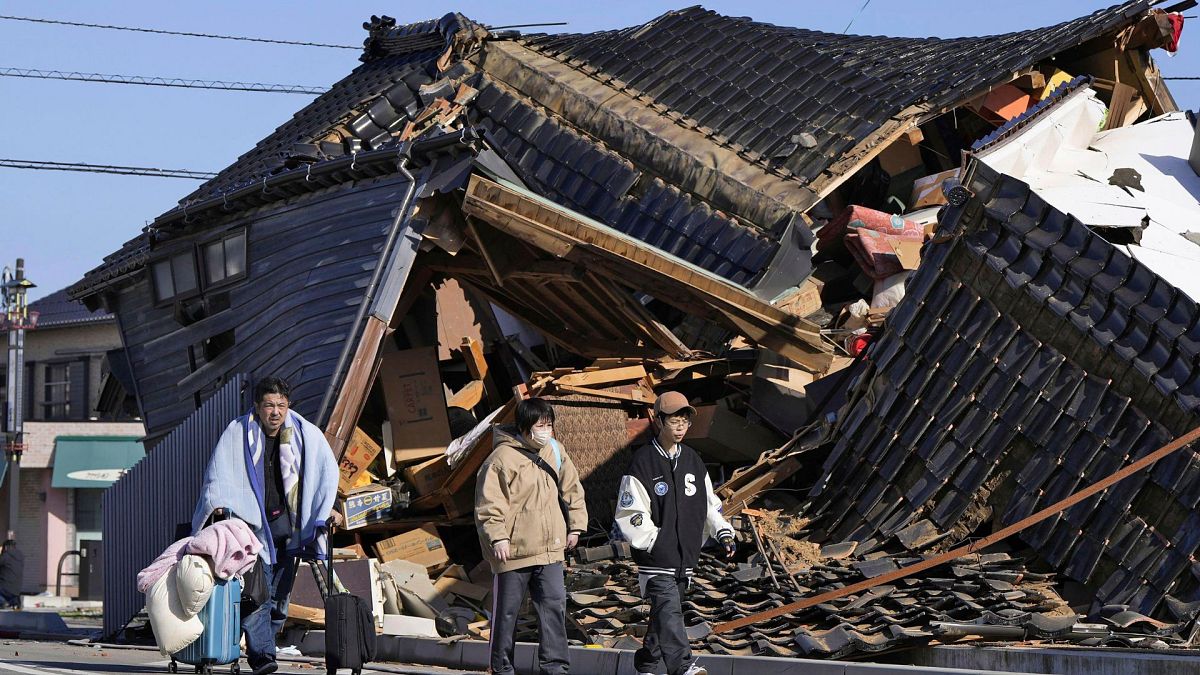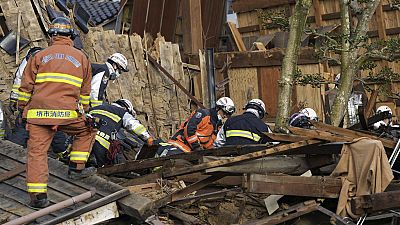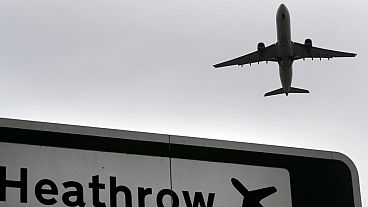A passenger plane has crashed in flames in Tokyo after colliding with an aircraft taking aid to the earthquake-hit west coast.
Japan was struck by a series of powerful earthquakes on Monday that have left at least 48 people dead. Thousands of buildings have been damaged by fires and landslides.
On Tuesday just before 6pm local time (10am CET), a Japan Airlines flight collided with a Japanese coastguard plane that was heading to Niigata Airport to deliver aid to the earthquake-hit area. The passenger plane landed in flames on a runway at Tokyo's Haneda Airport.
All 379 passengers and crew on board have been evacuated, according to Japan Airlines, but only one of the six people on the coastguard plane survived.
Tsunami warning lifted in Japan
A major tsunami warning was issued for Ishikawa prefecture on Japan’s central west coast. Lower-level tsunami warnings or advisories for the rest of the western coast of the main island of Honshu, as well as for the northern island of Hokkaido, on Monday afternoon.
The warning was downgraded several hours later, and all tsunami warnings were lifted as of early Tuesday, but those living in coastal areas have been advised not to return home yet. Waves measuring more than one metre hit some places.
Bullet trains in the region were halted, but service was mostly restored by Tuesday afternoon. Sections of highways were closed and some flights were suspended.
Water, power and cell phone service were still down in some areas on Tuesday.
The country remains on alert for further quakes.
What is the current travel advice for Japan?
The UK Foreign Office has warned that further aftershocks remain a possibility and transport links are disrupted.
It advises travellers in the affected areas to follow instructions from the local authorities and check NHK World news, the Japan Meteorological Agency and the Japan National Tourism Agency for the latest information.
Which areas are affected by Japan’s earthquakes?
The affected areas include the Sea of Japan coast in: Ishikawa, Yamagata, Niigata, Toyama, Fukui, Hyogo, Hokkaido, Aomori, Akita, Kyoto, Tottori and Shimane prefectures, plus Iki and Tsushima Islands.
Tremors began near the Noto peninsula in Ishikawa prefecture in western Japan on New Year’s Day.
The region includes tourist spots famous for lacquerware and other traditional crafts, along with designated cultural heritage sites.
What should you do if an earthquake hits?
Japan is frequently hit by earthquakes because of its location along the ‘Ring of Fire’, an arc of volcanoes and fault lines in the Pacific Basin.
When an earthquake hits, Japan’s National Tourism Agency advises you to protect your head with a bag or hard object. If you are in your hotel or accommodation, take shelter under a durable table. Alternatively, stay safe in an open space or near a sturdy pillar that will not be exposed to falling objects.
When the tremor has stopped, search for the closest exit and follow instructions from staff. Avoid using elevators. If you are inside a lift at the time of the quake, press all floor buttons and get out wherever the elevator stops, if it is safe to do so.
What should you do if a tsunami warning is issued?
If a tsunami advisory is issued, waves of up to one metre are possible. Do not enter the ocean or rivers, stay away from waterfronts, return to your accommodation and pay attention to updates.
A tsunami warning carries the greater risk of waves up to three metres high, while a major tsunami warning could see waves of between five and 10 metres. Waves are expected to hit repeatedly.
In the event of a warning, you should watch the actions of those around you and evacuate to higher ground or a tsunami shelter.
Monday’s tsunami warning was the most serious since a major earthquake and tsunami struck the country’s northeast in March 2011, killing 18,000 people.



